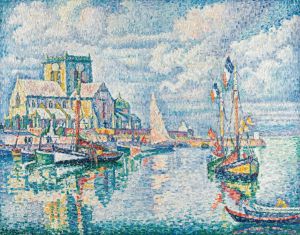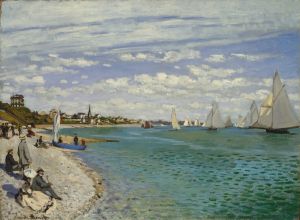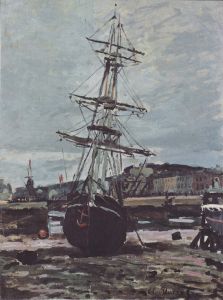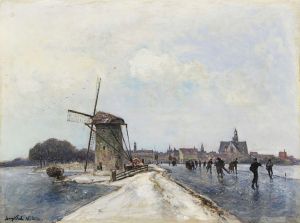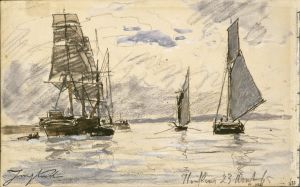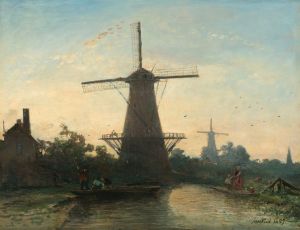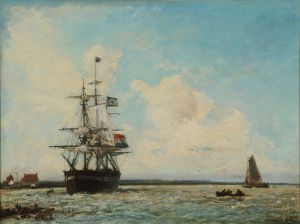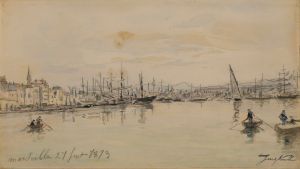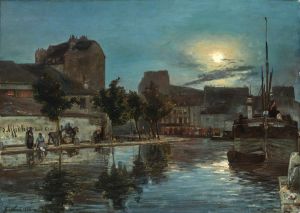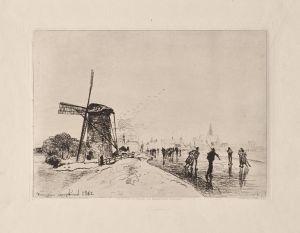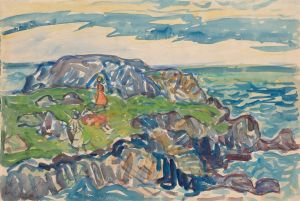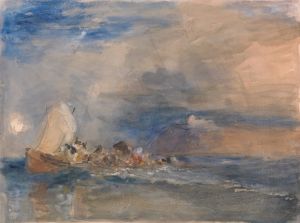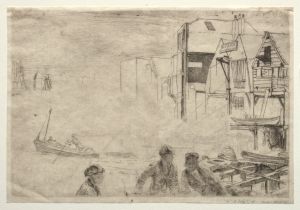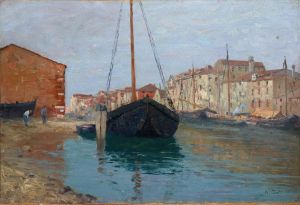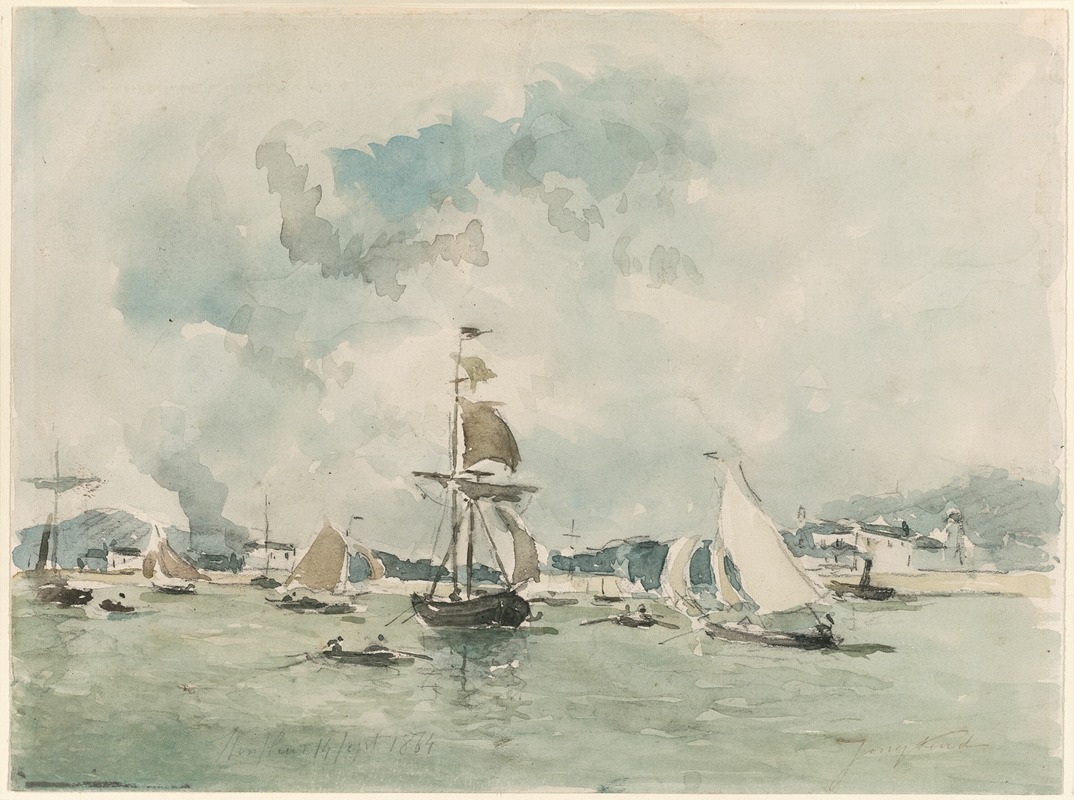
The Port of Honfleur
A hand-painted replica of Johan Barthold Jongkind’s masterpiece The Port of Honfleur, meticulously crafted by professional artists to capture the true essence of the original. Each piece is created with museum-quality canvas and rare mineral pigments, carefully painted by experienced artists with delicate brushstrokes and rich, layered colors to perfectly recreate the texture of the original artwork. Unlike machine-printed reproductions, this hand-painted version brings the painting to life, infused with the artist’s emotions and skill in every stroke. Whether for personal collection or home decoration, it instantly elevates the artistic atmosphere of any space.
"The Port of Honfleur" is a painting by the Dutch artist Johan Barthold Jongkind, known for his significant contributions to the development of Impressionism. Jongkind was born on June 3, 1819, in Lattrop, Netherlands, and he became renowned for his landscape paintings and marine scenes. His work is characterized by a keen observation of light and atmosphere, which had a profound influence on the Impressionist movement.
Jongkind moved to France in 1846, where he became associated with the Barbizon School, a group of painters who focused on naturalistic representations of landscapes and rural life. It was during his time in France that Jongkind developed his distinctive style, which combined elements of Dutch landscape tradition with the emerging French Impressionist techniques.
"The Port of Honfleur" is one of Jongkind's notable works, capturing the bustling activity and serene beauty of the port town of Honfleur, located in the Normandy region of France. Honfleur was a popular subject for artists due to its picturesque harbor and the quality of light, which was particularly appealing to painters interested in capturing the effects of natural illumination.
In this painting, Jongkind employs his characteristic loose brushwork and a subtle palette to depict the harbor scene. The composition typically includes boats docked at the port, the reflections in the water, and the surrounding architecture, all rendered with a sense of immediacy and vibrancy. Jongkind's ability to convey the transient effects of light on water and sky is evident in this work, showcasing his skill in capturing the essence of a moment.
Jongkind's approach to painting was influential to many Impressionist painters, including Claude Monet, who regarded Jongkind as a mentor. Monet once remarked that Jongkind's encouragement and guidance were pivotal in his development as an artist. Jongkind's emphasis on painting en plein air, or outdoors, to capture the changing qualities of light and atmosphere, was a practice that became central to the Impressionist movement.
"The Port of Honfleur" exemplifies Jongkind's mastery in portraying marine and urban landscapes with a sense of immediacy and atmospheric depth. His work is celebrated for its innovative use of color and light, which helped lay the groundwork for the Impressionists' exploration of these elements.
Jongkind continued to paint and exhibit his works throughout his life, gaining recognition for his contributions to art. He passed away on February 9, 1891, in La Côte-Saint-André, France, leaving behind a legacy that would inspire future generations of artists. His paintings, including "The Port of Honfleur," remain significant for their role in the transition from traditional landscape painting to the modernist approaches of the late 19th and early 20th centuries.





